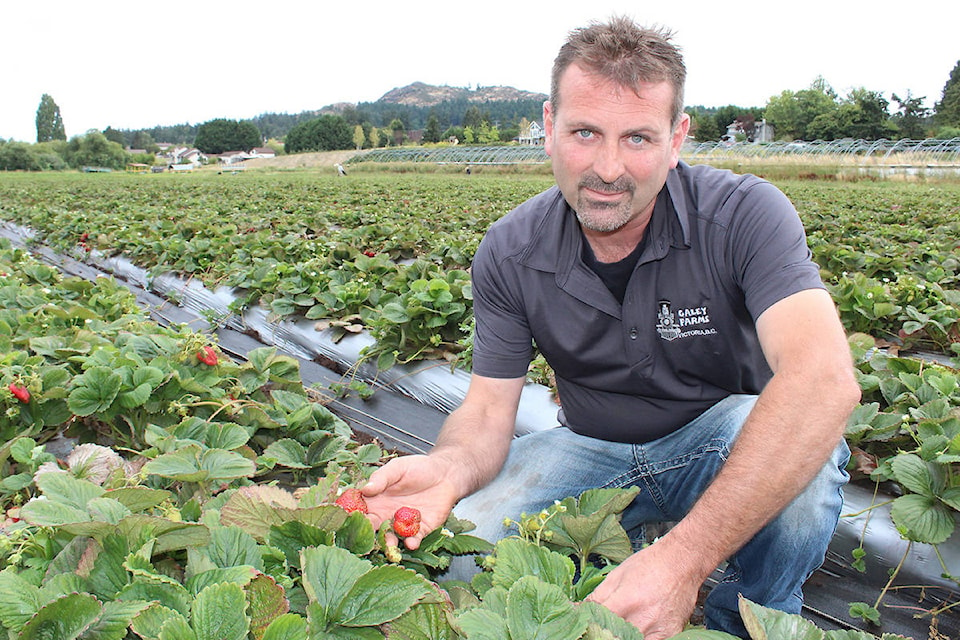This is the third story in a six-part series chronicling farming on the South Island ahead of the 150th anniversary of the Saanich Fair. We talked to farmers both old and young, and asked them what has changed over the years and what makes them who they are today.
Check back each morning and afternoon for new stories between Aug. 29-31.
Part 1: Erin Bett, Fierce Love Farm
Part 2: Robin Tunnicliffe, Sea Bluff Farm
——————
Changes in technology and weather, and the challenge of finding good labour top the list of priorities for Rob Galey, who runs Galey Bros. Farms in Saanich.
Galey joined the family business in the 1980s, run by his dad Ray and uncle Gordon. They had moved the farm to Blenkinsop from Cordova Bay where grandfather Don had raised dairy cows in the 1940s and delivered milk by cart.
As Galey slowly inherited the farming operations he leaned towards crops like berries and later (in the year 2000) introduced a popular train ride that brought people onto the farm and changed their experience. Pumpkin patch hayrides, a corn maze, old western movie sets, a Sphinx, a petting zoo, a haunted house and a playground all helped create an additional revenue stream that other farms didn’t have.
But the challenges aren’t finding actors for the live haunted house, or locals to work at the farm, Galey said.
“The biggest challenge is dealing with everything at the same time,” he smiled. “Climate change, geese, deer, labour — these are always happening.”
Food safety standards are more straightforward. They have risen, and the process takes longer to do things, but everyone has to meet those standards whether it’s the practises or the paper trail, Galey said.
In the fields, it’s deer, geese, and flash floods that keep the staff busy.
“Personally I’ve noticed weather comes in extremes more than it used to,” Galey said. “Drought periods are longer, and when it does rain, it’s not just soft rain. It won’t rain for a while and the ground becomes hard and dry, and then when it rains hard, it just pours.”
To deal with the water, the Galeys invested in drainage systems and when the torrential rains do come they can save the crop by getting the water out quickly.
“We have underground tile drains below the pumpkins and the corn maze that take water away,” Galey said. “This is a peat bog, but we don’t get mud or flooding.”
Technology is a game changer but Galey isn’t sure if it’s made things anything easier. He said they do things on bigger scales now, growing more intensely on less land.
“The science is very specific, we keep a close watch on the nutrient and PH balance to get great crops, along with keeping moisture levels perfect.”
With berries it’s about picking every two days at the perfect stage, which coincides with consistent labour.
“Luckily we have great workers, both from here and imported labour,” Galey said. “We have people who come back every year, they are like family. We couldn’t run with out them, as much we would love to have more local workers we just can’t attract them.”
Climate change, for now, isn’t all that bad. Instead of gaps between growing seasons they now overlap.
“Back when I started berries it was five weeks for strawberries, four or five for raspberries, but now with all the different varieties and different spaces, I have strawberries May to October and raspberries from mid-June to September.”
Because of the geese, the Galeys have backed right out of growing carrots.
“We were losing so many carrots, geese would wipe out an acre at 5:30 in the morning before we even got here. We’re trying to grow crops that geese don’t like; you’re not going to beat it so accept it, plan for it, adjust your farming.”
